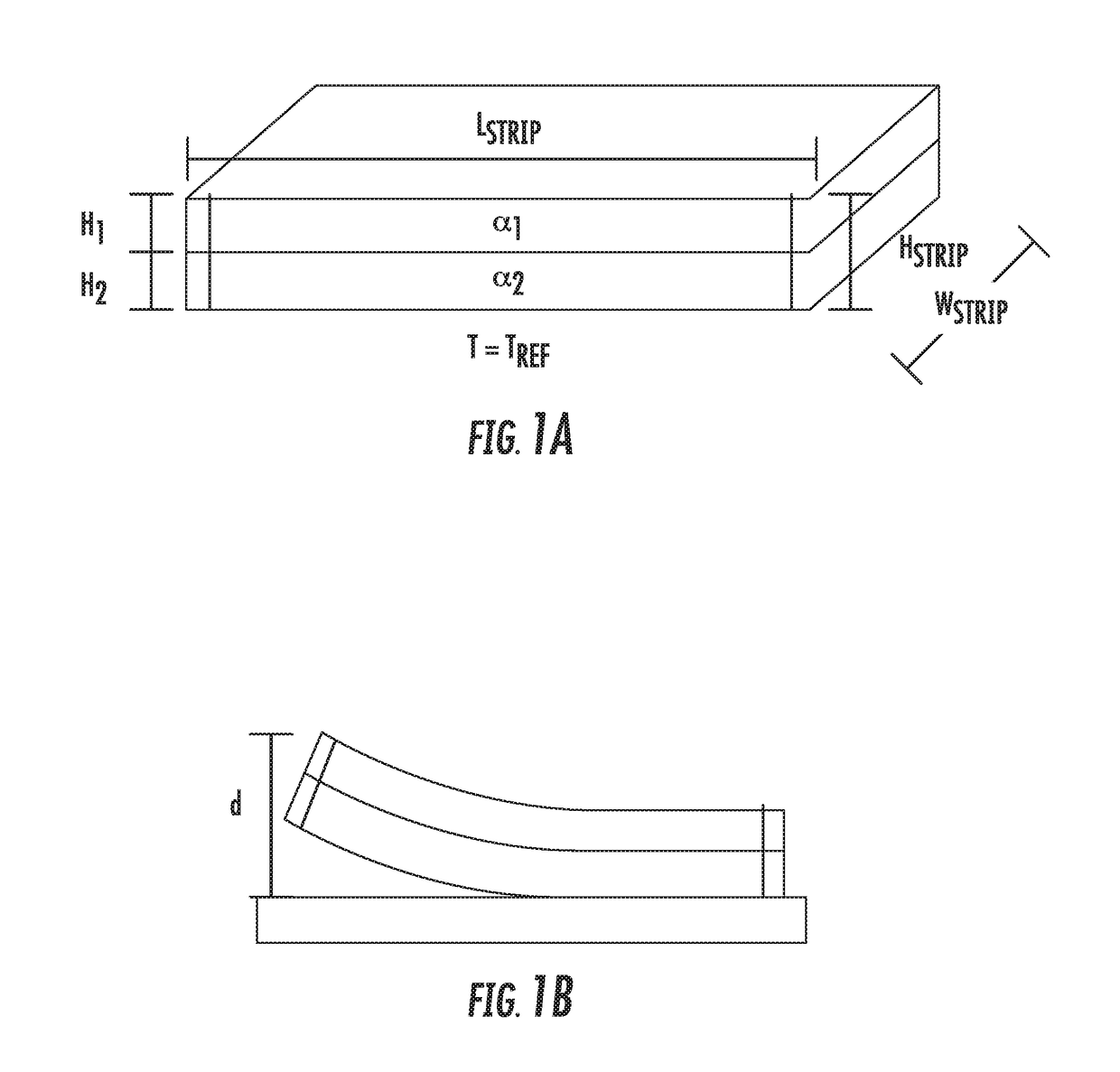Systems and methods for thermally actuated flow control
a flow control and thermal actuator technology, applied in the direction of valve operating means/release devices, process and machine control, instruments, etc., can solve the problems of loss of degrees of freedom, reduced control efficiency, and reduced reaction rate-limited process, so as to reduce the heat generation rate and increase the deflection
- Summary
- Abstract
- Description
- Claims
- Application Information
AI Technical Summary
Benefits of technology
Problems solved by technology
Method used
Image
Examples
Embodiment Construction
[0045]Various implementations provide an inherently safer design feature for microchannel reactors that provides temperature control at the individual channel level. This approach relies on bimetallic strips embedded within the combustion channel, forming a thermally-actuated “valve”. Bimetallic strips convert a temperature change into a mechanical displacement. Heating the strip increases its deflection and thereby restricts but does not completely block flow in the combustion channels of the reactor, which consequently reduces the rate of heat generation according to some implementations. The thermally-actuated valve is not limited to use in microchannel reactors and may be used in other structures for which thermally actuated flow control is desired, according to some implementations.
[0046]FIGS. 3 through 5C illustrate a thermally actuated flow control system 10 according to one implementation. The system includes a first linear array of bimetallic strips 12 disposed on an upper ...
PUM
 Login to View More
Login to View More Abstract
Description
Claims
Application Information
 Login to View More
Login to View More - R&D
- Intellectual Property
- Life Sciences
- Materials
- Tech Scout
- Unparalleled Data Quality
- Higher Quality Content
- 60% Fewer Hallucinations
Browse by: Latest US Patents, China's latest patents, Technical Efficacy Thesaurus, Application Domain, Technology Topic, Popular Technical Reports.
© 2025 PatSnap. All rights reserved.Legal|Privacy policy|Modern Slavery Act Transparency Statement|Sitemap|About US| Contact US: help@patsnap.com



